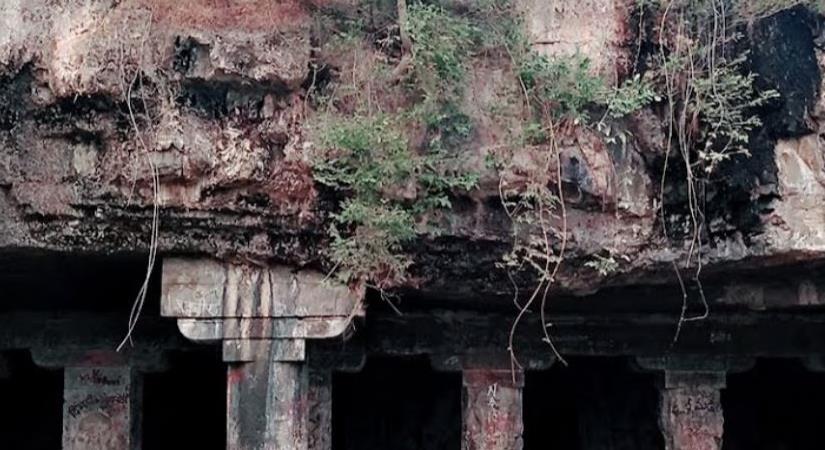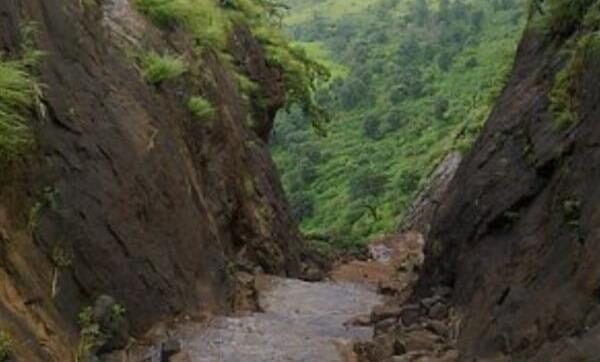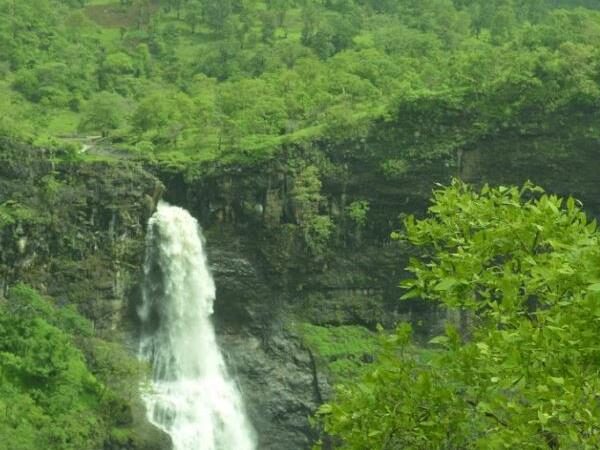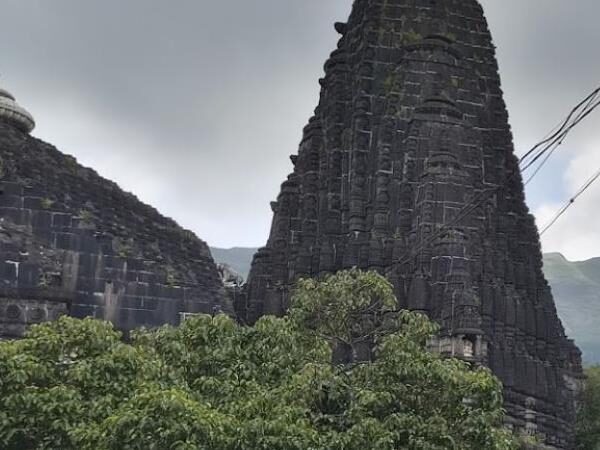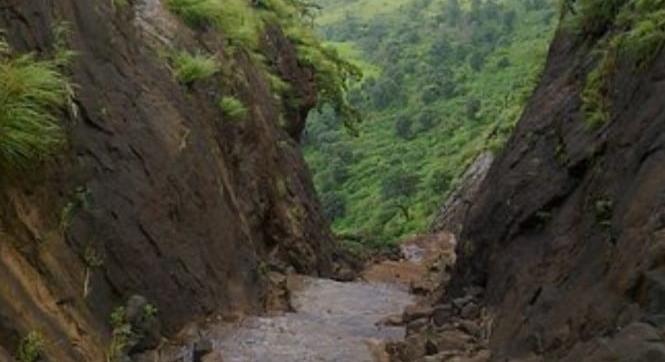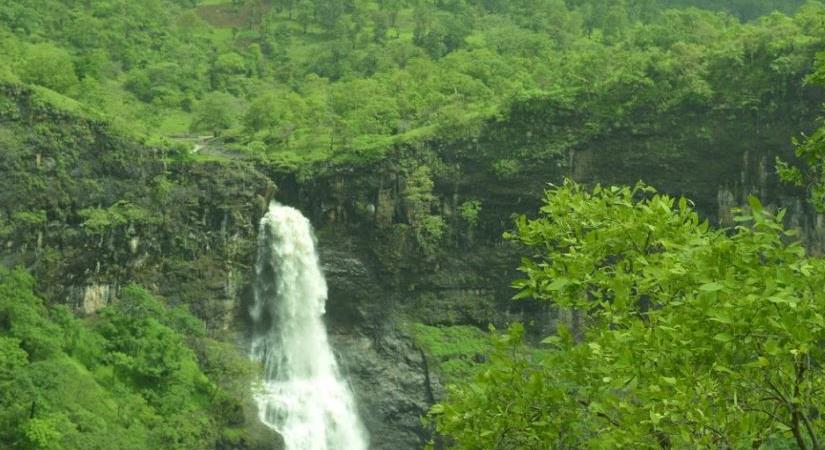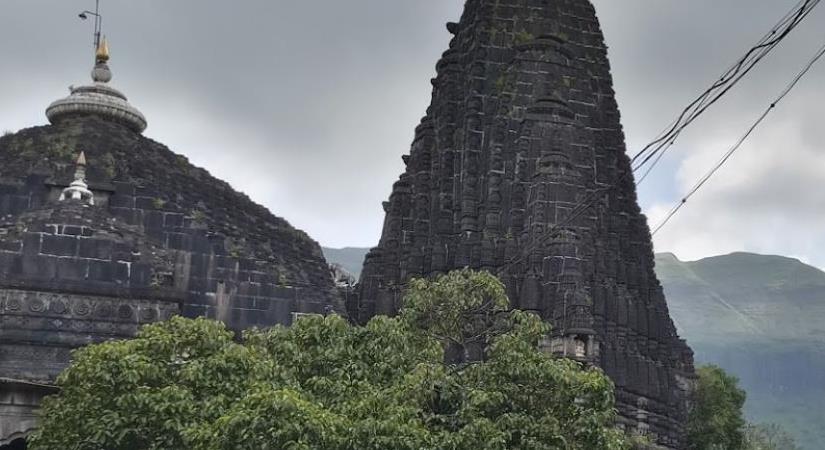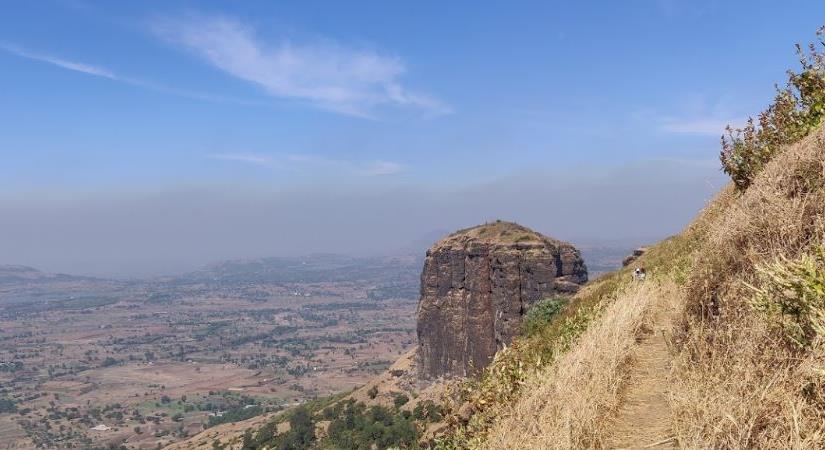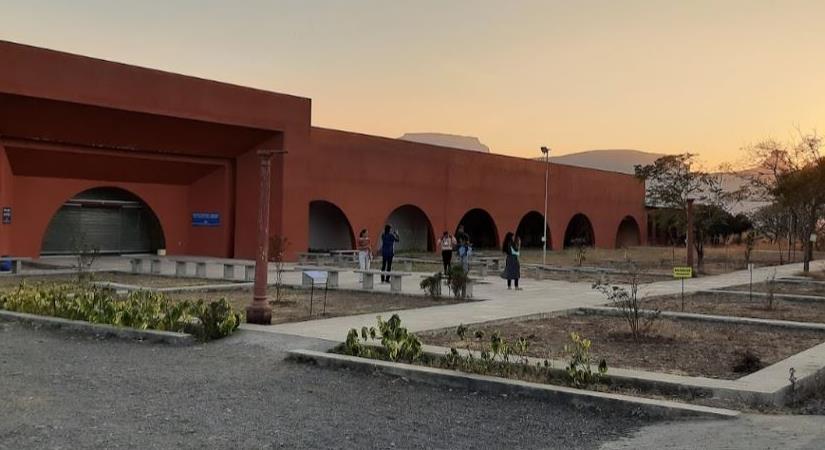Ramshej Fort, is in north of Nashik City!
There are some fascinating spots to check out at Ramshej Fort. First up is Ram Mandir, which is inside a huge cave along the way to the fort’s top. The cave is well maintained and offers a nice place to stay. You can even see an inscription near the cave! Just watch out for the broken steps in front of the cave that lead to the top of the fort. There’s even a secret tunnel, but unfortunately, it’s inaccessible now.
Moving on, the main entrance of the fort, Mukhya Darwaja, is located beneath a huge cliff, but it’s a bit devastated now. If you keep climbing, you’ll reach a plateau with two cisterns and a big pond. And if you keep going, you’ll find a Devi Mandir, where they celebrate Navratri Festivals. And guess what? There’s even another secret doorway of this fort nearby! But don’t forget to check out the destroyed remains of homes while you’re exploring.
Now, for ways to reach Ramshej Fort. First, you have to reach Nashik. Then, board an state transport from Nashik’s CBS bus station to Peth and get off at Aashewadi Phata. From there, it’s just a short walk to Aashewadi village, where you can start your climb. It takes about an hour to climb the fort from this route. And why is it called Ramshej? Well, legend has it that Lord Ram made this place his residence for a time during his exile, hence the name Ramshej Fort.
But the most interesting thing about Ramshej Fort is its history. When the Mughals tried to conquer this fort, they thought it would be a piece of cake since it was near Nashik. But , were they wrong! The fort had only 600 Mavalas, but they were tough as nails. The Mughals sieged the fort, but the Mavalas replied with a massive stone attack, forcing the Mughals to back off. Even when the Mughals came back with a bigger army and better weapons, the Killedar (commander) of Ramshej Fort was too smart for them. He built a wooden bastion capable of holding 500 men and 50 canons and cleared the surrounding forest to do it. The Mughals attempted attacks from the bastion, but they failed miserably. And when the Marathas sent an army of 7000 to break the siege, the Mughals lost 500 horses to the Marathas in a fierce battle. And just when the Mughals thought they had the upper hand, the Marathas divided their army and foiled the Mughals’ new strategy.
So, are you ready to conquer Ramshej Fort? It may take a bit of climbing, but the historical significance and fascinating spots are worth it. And who knows, you might even find a secret tunnel or two!
Ramsej Fort was used in the fight against the Mughal Empire for six and a half years. The fort’s first Killedar (Fort commander) was Suryaji Jadhav, but he was transferred after five and a half years and a new Killedar was soon appointed, as per the rotation policy of the Maratha Empire. In 1682 Aurangzeb sent Sahabuddin Khan to conquer the fort. Shahbuddin Khan, with his 40,000 man army and strong artillery, vowed to capture the fort within a few hours, but the 600 Maratha soldiers in the fort held their posts and pushed the forces back for many months with a fierce array of slingshots, lit haystacks, and huge stones – even though there were no cannons in the fort. Mughal artillery managed to break the fort walls in the evening. They assumed that the fort would be captured easily. However, all 600 Marathas on the fort worked for the full night to rebuild the entire broken section of the wall, much to the despair and awe of the Mughals.
The inability of the artillery to capture the fort made Aurangzeb very frustrated and uneasy. He raised a wooden platform to storm the fort. Marathas were amazing planners, and Shivaji and his son Sambhaji had a policy of keeping a healthy supply of ammunition in the fort, even though it had no cannons or guns. Ramsej was no exception and, even though it did not have cannons, the fort had sufficient ammunition. The Fort Commander came up with the idea to use amply-available animal skin and wood to make wooden cannons. Coupled with the ammunition already available in the fort, these wooden cannons inflicted heavy damage to the Mughal army. The retaliation from the Marathas was so strong that Aurangzeb left the command to Bahadurkhar Khan Kokaltash and fled to Junnar.
Bahadurkhan also tried to capture the fort by fooling Marathas into believing that the Mughals were preparing for a full-fledged frontal assault, while his real plan was to send 200 of his best troops from the rear side of the fort by climbing the steep cliff. The Maratha commander was aware of the fact and allowed these 200 soldiers to climb the rope. While they were climbing up the rope, he cut the rope and as a result 200 of the best Mughal soldiers fell and died in the valley. Bahadurkhan was distraught and found that Marathas were receiving secret supplies from the nearby forts. He carefully blocked all the paths to nearby Maratha forts. It created a dire shortage of food in the fort. Seeing the situation, Maratha King Sambhaji acted quickly by sending his sardars – Rupaji Bhosle and Manaji – with an 8,000 extra soldiers and more supplies.
They tried to break through the Mughal line but were unable to supply the fort. Sambhaji worried greatly that his fiercely loyal and brave warriors were fighting without food. However, the weather supported the Marathas and due to severe weather conditions, Bahadurkhan relaxed his encirclement for one day. This enabled Rupaji and Manaji to supply the fort with supplies enough for six more months. Bahadurkhan then tried to win the fort with the help of a ‘mantrik’ believing that the Marathas had ghosts under their control.
The Marathas again fooled him as the Mantrik was himself as a Maratha soldier in disguise who led the Mughal army to a deadly ambush of the Marathas. Bahadurkhan and Mughals fled the deadly ambush and several Mughals were killed in this surprise attack. Bahadurkhan was unable to siege the fort. Finally, he burnt the wooden platform and left the battle. Aurangzeb sent Kasim Khan Kirmani to lead the battle and the Mughals conquered Ramshej Fort. Ramsej was one of the forts which surrendered to the British Army in 1818 after the fall of Trymbakgad fort. Captain Briggs reported that there were eight guns, 9 small cannons called jamburasand 21 jingals on the fort.
